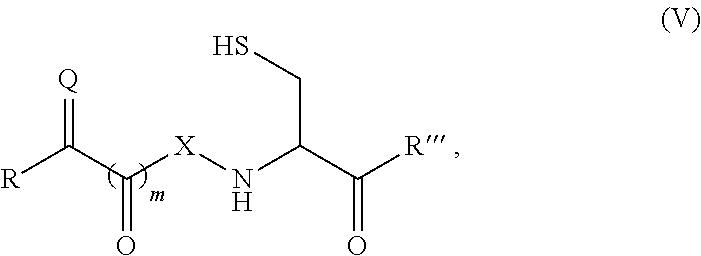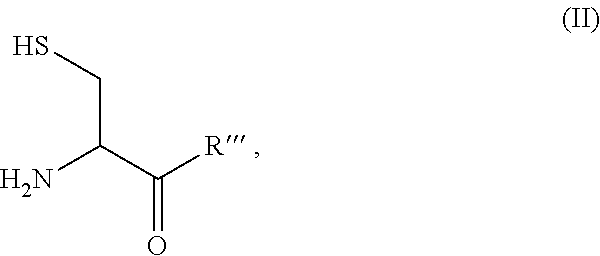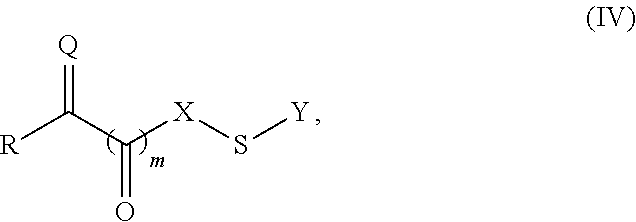Site-specific modification of proteins through chemical modification enabling protein conjugates, protein dimer formation, and stapled peptides
- Summary
- Abstract
- Description
- Claims
- Application Information
AI Technical Summary
Benefits of technology
Problems solved by technology
Method used
Image
Examples
examples
Transamination of A-Leptin by Pyridoxal Phosphate (PLP) and Cross-Linking Experiments
[0233]For protein modification studies of the four α-helical-bundle protein A-leptin (A), pyridoxal phosphate (PLP, B) as a transaminating agent with the objective of producing a carbonyl at the N-terminus (Scheme 16). When A-leptin is incubated with 10 mM PLP in PBS, pH 6.5 at 37° C. for 16 hr, three peaks are observed in the mass spectrum at 16,095, 16,342, and 32,189 Da. These signals can be related to a pyruvyl protein, the ketoamide (C). The product (D) with mass 16,342 corresponds to the sum of the masses of PLP (B) and the expected ketoamide (C).
Dedeo et al. (11) have suggested an aldol structure for such adducts that are formed between PLP and pyruvyl proteins during transamination sequences. The high concentration of PLP and the potentially reactive pyruvyl protein (3), make the aldol product (4) a likely possibility in the case of A-leptin as well.
[0234]The peak at mass 32,189 formally cor...
PUM
| Property | Measurement | Unit |
|---|---|---|
| Structure | aaaaa | aaaaa |
| Covalent bond | aaaaa | aaaaa |
Abstract
Description
Claims
Application Information
 Login to View More
Login to View More - R&D
- Intellectual Property
- Life Sciences
- Materials
- Tech Scout
- Unparalleled Data Quality
- Higher Quality Content
- 60% Fewer Hallucinations
Browse by: Latest US Patents, China's latest patents, Technical Efficacy Thesaurus, Application Domain, Technology Topic, Popular Technical Reports.
© 2025 PatSnap. All rights reserved.Legal|Privacy policy|Modern Slavery Act Transparency Statement|Sitemap|About US| Contact US: help@patsnap.com



